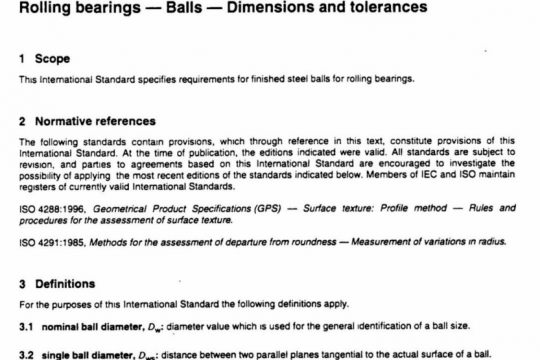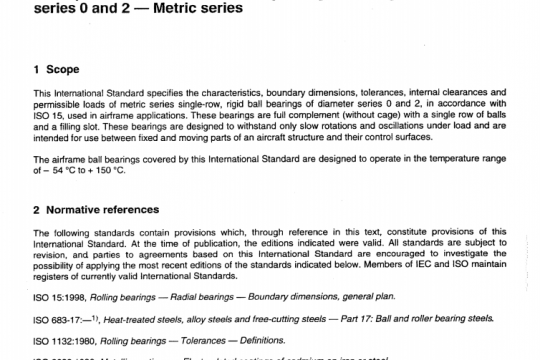ABMA 12.2:1992(R2008) pdf free
ABMA 12.2:1992(R2008) pdf free.Instrument Ball Bearings Inch Design
Recommended practices for gaging instrument ball bearings are given in this stan-dard for use by bearing consumers for deter-mining acceptability.
Certain instrument ball bearings have extremely thin radial ring sections that can readily be deformed by gaging loads. Gaging practices and loads are therefore established to ensure agreement in measurement.However, the measuring and gaging meth-ods may not always fully check the indicated requirements. Whether or not such methods are sufficient and acceptable depends on the magnitude of the actual deviations from the ideal dimension or form and the inspection cir-cumstances.
Bearing manufacturers frequently use spe-cially designed measuring equipment for indi-vidual components, as well as assemblies, to increase speed and accuracy of measurement. Should the dimensional or geometrical errors appear to exceed those in the relevant specifi-cations, when using equipment as indicated in any of the methods in this standard, the matter shall be referred to the bearing manufacturer.
A maximum gage load of 0.6 newtons (2 ounces) is specified for all mechanical gage measurements of instrument bearings. The gaging load can be greater than 0.6 newtons provided that the gage point contact stress which is induced in the bearing is negligible and provided that the bearing ring deflection under the gaging load is less than 10 percent of the applicable tolerance. The user is strongly advised to obtain specific correlation with each bearing supplier when using a gage load greater than 0.6 newtons. Ring deflection cor-rection factors must be considered on bear-ings of light section, even under light gaging loads.
The recommended gaging practice for instrument ball bearings is through the use of 2 point air gages, using the smallest orifices commensurate with spindle size or through the use of 2 point mechanical gaging, whichever can give the better precision accuracy for the dimension being measured. This recommen-dation is particularly important on inner ring bore and outer ring outside diameters for which minimum bore and maximum outside diameter measurements are necessary to accommodate assembly clearance requirements.ABMA 12.2 pdf free download.




